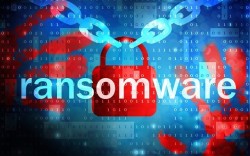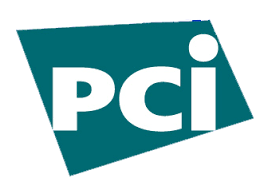
Continuing our series on Merchant program for PCI-DSS. Why this is (or will be) so important is that in around 12 – 15 months, if you are a merchant, very likely you will be getting a call from your acquirer.
About 2 months back, Mastercard announced that all acquirers must have in place a risk assessment program for Level 4 merchants by March 31, 2019. This basically means that there is a great concern that 99% of Level 4 merchants out there are blissfully unaware of this PCI-DSS nonsense they need to comply. It is the acquirer’s duty, but the pain starts all the way at the merchants.
One industry feeling the pinch here is the travel industry. But don’t worry, travel agents, soon, the other industries like your cousins at the hotels and hospitality will be going through the same process as you are going through now. It’s just who is going through first. And the faster you get through the better.
Travel agents across the world has been mandated by IATA to be PCI compliant. Please read our previous post here.
We have gone through the requirements in that post, but we’ve been hearing a lot of things coming to us from the travel agencies recently, namely:
a) All Travel Agents need to engage a QSA to formally sign off their SAQ.
IATA should be able to give a formal statement on this. QSAs or consultants or PCI experts cannot dictate or mandate the validation requirements. Mostly this is by the processor (IATA) or the acquiring bank. If they can’t make a statement, then it would fall back into the card brand validation requirements. Which it has so far, unless IATA comes forward to clear this up. We can’t seem to find anywhere that IATA has had special requirements other than listed in the card brands requirements.
There might be further explanation needed based on their PDF at http://www.iata.org/services/finance/Documents/pci-dss-compliance-procedure.pdf
The procedure first states
Travel Agents are encouraged to contact their merchant bank (acquirer) or the applicable payment brand(s) to identify the appropriate procedures based on their eligibility.
But then at the bottom it implies that for assessment, it needs to have a QSA perform ‘on-site’ PCI assessment – which is not exactly accurate as it depends on their level. Further on right at the bottom, it states:
Depending on the number of card transactions handled those can be:
– PCI DSS Attestation of Compliance (AOC) which must be completed by a Qualified Security Assessor (QSA).
– Self-assessment questionnaire signed by an authorized officer.
– The results of quarterly vulnerability scans if applicable.
The problem here is that if the AoC is required to be signed by the QSA, so does its corresponding SAQ. These documents have the same signoff (3c for QSA) section. If you read the above you might be tempted to also argue that IATA is saying, depending on the number of card transactions (meaning your level), the requirements can be either:
– PCI DSS Attestation of Compliance (AOC) and ROC or SAQ which must be completed by a Qualified Security Assessor (QSA) – this applies to Level 1 Merchant (they can also use ISA but lets put that aside for now), and also Level 2 if you deal with mastercard.
– Self-assessment questionnaire (SAQ) and AoC signed by an authorized officer. – This applies to level 3 and 4
– The results of quarterly vulnerability scans if applicable.
Now we don’t know if this is what IATA is saying – it’s just the many ways this section can be interpreted so we do hope IATA will have a clarification on this matter. They CAN decide on a more stringent requirement for their agencies (such as ALL levels engaging a QSA to be onsite like a level 1 merchant), but this needs to be clear, so agencies can forge ahead with the proper budget and expectation.
Most travel agents fall under the Level 4 category of merchants, which based on the current requirements of PCI-DSS only requires a merchant officer to sign off the document.
Mastercard’s SDP services recently responded back to us on this with a confirmation as below:
Level 4 merchants are required to ensure they are PCI-DSS compliant by filling in the correct SAQ based on their processing environment and have the evidences prepared , and also to do this each year. There is no requirement from Mastercard to engage a QSA/ISA to signoff their SAQ on part 3c or part 3d of their SAQ/AoC and their executive signoff on part 3b is sufficient. This must be signed by the merchant. Engaging a QSA will be above and beyond their requirement and only done if they require assistance in filling their SAQ. Therefore, using a QSA is entirely optional and based on the discretion of the merchant.
This goes a long way in saying the same thing that has always been said. The logic I would argue here is, if your industry is made up thousands of merchants, how do we build a meaningful program to get all these merchants compliant? If QSAs are supposed to validate all the evidences, how much bottleneck will there be?
This is also inline with the famous PCI-DSS myth document at https://www.pcisecuritystandards.org/pdfs/pciscc_ten_common_myths.pdf. In Myth 6:
Myth 6 – PCI requires us to hire a Qualified Security Assessor
Because most large merchants have complex IT environments, many hire a QSA to glean their specialized value for on-site security assessments required by PCI DSS. The QSA also makes it easier to develop and get approval for a compensating control. However, PCI DSS provides the option of doing an internal assessment with an officer sign-off if your acquirer and/or merchant bank agrees. Mid-sized and smaller merchants may use the Self-Assessment Questionnaire found on the PCI SSC Web site to assess themselves.
Now, I know, there are so-called ‘merchant programs’ out there run by a few QSAs. I’ve spoken to many merchants who deem themselves compliant just because an ASV ran a scan on their external IP address and gave them a ‘certificate’ of compliance (which is not even a recognised document by PCI-SSC!). If anything, it just makes the merchant falsely complacent and gives PCI a bad name and a bad rep as an on-paper compliance but practically as useful as ice is to eskimoes.
The crux of the matter isn’t whether QSAs need to be involved or not. It would be super if they can get involved, but the matter is cost and time. QSAs programs are not cheap, and also, how much work do they actually do for the client? The counter argument is, if QSAs are not involved, what then? You get a bunch of executives just signing off they have a firewall when in their mind they are thinking, “Man, Which wall am I going to have to set on fire to comply to this stupid request?”. It’s not a knock on their intelligence, but really, a lot of merchants are really good in doing whatever they are doing and they don’t exactly have a CIO to standby to interpret all the requirements of PCI-DSS for them. And PCI, despite its oftentimes banal requirements, is a compliance requiring a lot of technical understanding.
How do we solve this? Awareness.
The SAQs reason for existence serves simply as a baseline document and puts the onus on the merchant to ensure they have the proper security in place. A lot of merchants are not aware of this obligation. The moment they sign off that document, they are saying, I am taking responsibility over this document. I verify and validate this as true. If it’s not…well. If it comes to any breaches or anything, then the merchant takes responsibility.
If they are fully aware of their responsibility, then getting help is likely required. But now, there is no need for a formal QSA to get involved. If you can, then do so as QSAs do theoretically should have more experience in PCI – but consultants, or advisors can take this role. And there are many reasons why it might turn out better this way which I will explore in my next few articles.
b) All Travel Agents need to engage ASV to do their security scans
Man. This is probably the most misunderstood requirement of all time. All time. 100s of merchants have come to us proudly saying their ASV scan proves their PCI compliance. No, it doesn’t. The ASV scan is just one of many requirements you need to go through. It’s like you dressing for work and wearing only your shoes and nothing else and go to work and say, “Hey, I am all dressed!”. Um. No.
And while ASV is important, we have seen our fair share of trigger happy ASVs being done for travel agencies. Oh, you have a website? ASV! Oh, you have an internet facing IP and router? ASV!
Come on. We recently adviced one client who was having trouble remediating an issue on their website. I asked them, wow, for a small company doing internet transactions, its a big deal. And they went like, “What in the good name of **** are you talking about?” And they explained they just had a corporate website and were asked to do a scan. I went and look, and aside from the site looking like it had been designed by a 15 year old drinking too much mountain dew, it serviced no credit card transactions at all. They don’t even have any systems doing that. They just do EDC terminals that connect directly to the bank and completely isolated. So why the scan?
Because we were told, they said.
And so I drafted an email for them and told them to send it over to their QSA (they are level 4 by the way) and the response came back, “Oh thanks man, they told us there is no need to scan anymore! Yay!”.
The problem remains. How many merchants are scanning their completely static websites and receiving a certificate of compliance and pronouncing they are PCI ‘certified’? Is it the ASV or QSA’s problem? No. PCI clearly states that it is the merchant (or scan customers) who ‘defines the scope of the scan’, so merchants are taking a fair bit of the burden if the ASV is done incorrectly. ASV scans are needed if your site does credit card acceptance (SAQ A-EP). It’s also needed on any external IPs you might have if these are transmitting card information (SAQ B-IP, SAQ C). SAQ A, B and C-VT has no scan requirements listed. A lot of clients could possibly fall under the SAQ B and possibly SAQ C-VT, so ASV scans can be further avoided.
c) All Travel Agents will be fined XYZ amount for non-compliance
Now, this might be true but IATA hasn’t really come out to say anything. Frankly I will be very surprised if there is such a requirement. Basically, IATA is just saying, if you don’t become compliant, don’t connect to us. If you don’t connect to us, then you can’t issue tickets. This is a worse threat than being fined. So they don’t have to be overbearing to impose such a condition AND impose a fine for clients who are non compliant. Because technically, if you are non compliant, you are not connected to IATA. If you are not connected to IATA, what are they fining you for?

d) PCI-DSS is applicable to all Travel Agents even those without credit card acceptance and transactions
OK. I am not sure whether there will be such agencies or not, meaning there is ZERO card acceptance or processing or storage or transmission in your merchant environment. Now do note, even e-commerce when you outsource your ENTIRE payment processing, the fact that you have the credit card payment option on your website puts you in need of compliance. For merchants that do not have any facility whatsoever (either card present or card-non-present), then technically, PCI-DSS should not apply. I say technically. Because if you are connecting to IATA’s processor (BSP) then even if you make zero or a million transactions, the risk is still there. So yes again IATA as the big boss of BSP has the right to ask for compliance from agencies with zero credit card transactions. In this case, my suggestion is to write to IATA and see what is the next step. I can’t imagine any merchant business now not catering to credit/debit card payment but, wait. OK, my neighbourhood barber actually told me they only accept cash only, or barter trade my iphone for 2 years supply of haircut. So yeah, why not. But really, if no credit/debit card payment is an option and you regularly settle through agency credit or carrying a pile of cash, you technically can ask IATA what’s the next step.
In summary, we are not saying that there is some sort of conspiracy theory going on where QSAs are trying to pull a fast one on customers and creating F.U.D in the industry. After all, we ourselves have been certifying clients for 7 plus years already. But what we need to understand is that wrong information could be worse than no information. We need to get the right information out there so that merchants can make informed decisions. If they want QSAs, then ok all the better. If they prefer in house or specialised consultants, then OK. If they decide to do the hokey pokey instead of PCI compliance, then hey, that’s an informed decision on their side.
So, let’s get this awareness out. Travel agencies have about 10 months to get compliant. It’s not crunch time yet. This is like the start of the 3rd quarter in basketball. Important, but not Michael Jordan clutch time.
If you need more information on PCI-DSS applicability in your merchant business, drop us an email at pcidss@pkfmalaysia.com. We’ll get in touch with you ASAP.



